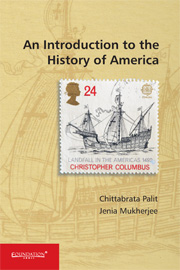Book contents
- Frontmatter
- Contents
- Preface
- Timeline of Events
- 1 An Early History: From Settlement to Colonization
- 2 The American War of Independence
- 3 The Formative Period: The Era of Solidarity and Expansion
- 4 ‘Two Americas’: Regional Differences and Sectional Conflicts
- 5 Agrarian and Industrial Revolutions
- 6 Resisting Voices
- 7 American Foreign Policy: Post-Monroe Doctrine to World War I
- 8 The Great Crisis and Its Recovery
- 9 The Rise of America: WWII and After
- 10 The Quest for Equality
- 11 American Environmentalism and Environmental History
- Epilogue: Perceiving American History Beyond the ‘Exceptionalist’ Framework
- Index
9 - The Rise of America: WWII and After
Published online by Cambridge University Press: 05 April 2014
- Frontmatter
- Contents
- Preface
- Timeline of Events
- 1 An Early History: From Settlement to Colonization
- 2 The American War of Independence
- 3 The Formative Period: The Era of Solidarity and Expansion
- 4 ‘Two Americas’: Regional Differences and Sectional Conflicts
- 5 Agrarian and Industrial Revolutions
- 6 Resisting Voices
- 7 American Foreign Policy: Post-Monroe Doctrine to World War I
- 8 The Great Crisis and Its Recovery
- 9 The Rise of America: WWII and After
- 10 The Quest for Equality
- 11 American Environmentalism and Environmental History
- Epilogue: Perceiving American History Beyond the ‘Exceptionalist’ Framework
- Index
Summary
The chapter begins with the US entry to the WWII followed by Allied victory. America's rise to ‘superpower’ in the post-WWII period entailed its unique political diplomacy, economic domination and control, and cultural hegemony over the other nations. American role during the Cold War down to the post-Cold War phase of unipolar world scenario is sketched in this chapter. Its deleterious impact, especially upon the decolonized, ‘underdeveloped’ ‘Third World’ nations, is noted under global capitalism when America emerged as the biggest power to control and take unanimous decisions in global politics and economy.
‘It is a rich tale of the continuing interplay between soaring ideals and gritty reality, aspiration and compromise, accident and purpose, and the will of the United States and the often contrary will of countless other international actors.’ The United States’ rise to ‘superpower’ in the aftermath of the WWII in a gradually emerging unipolar world is the saga of its unique political diplomacy, economic domination and control, and cultural hegemony over the other nations.
a. WWII – The Context, Entry of the United States, and Allied Victory
In the mid-1930s, as war clouds began to gather in Europe and Asia, Americans who found themselves in the depths of the Depression did not want to get involved in a world war, and retreated into a deeper position of isolationism.
- Type
- Chapter
- Information
- An Introduction to the History of America , pp. 196 - 213Publisher: Foundation BooksPrint publication year: 2014

